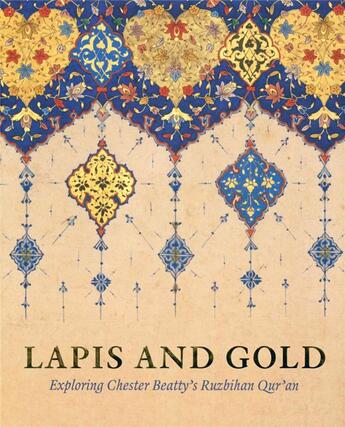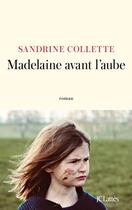Résumé:
The Chester Beatty Library's 16th-century Ruzbihan Qur'an-produced in the city of Shiraz in southwest Iran-is one of the finest Islamic manuscripts known. In terms of both materials and workmanship, it is exquisite: lapis lazuli and gold, the two most expensive pigments available, are used on... Voir plus
The Chester Beatty Library's 16th-century Ruzbihan Qur'an-produced in the city of Shiraz in southwest Iran-is one of the finest Islamic manuscripts known. In terms of both materials and workmanship, it is exquisite: lapis lazuli and gold, the two most expensive pigments available, are used on every page, while the rendering of the decoration is exceptionally fine. This is the most detailed and comprehensive study of any Islamic manuscript-and it is well worthy of such scrutiny.
Praised in a 16th-century account as one of the finest calligraphers of his time, Ruzbihan Muhammad al-Tab'i al-Shirazi would have produced numerous Qur'ans during the course of his career, but only five signed by him have survived. Much of the study of this, surely his finest manuscript, is focussed on understanding the processes and procedures involved in the production of the manuscript and thus on gaining an insight into the problems faced by Ruzbihan and the other artists and how they resolved them. Certain surprising and never-before-seen techniques of production and 'tricks-of-the trade' have been uncovered. A large portion of the information presented is the result of very close examination, under high magnification, of the manuscript's 445 folios (890 pages). Many of the reproductions included are of minute details of the decoration that are difficult, or even impossible, to see with the unaided eye.
The book follows the order in which work on the manuscript would have progressed, beginning with an examination of Ruzbihan's calligraphy, the various scripts he used to copy the text and the problems he faced, such as the spacing of the text and his errors and omissions. Additions, such as marginal notations, recitation marks and decorative devices indicating the divisions of the text, all of which guide the reciter in his reading of the Qur'an, are also considered.
Although the manuscript's renown has traditionally rested with the name of its calligrapher, it is equally the quality, extent, diversity and complexity of its superb decorative programme-the work of a team of highly skilled, yet anonymous artists and artisans-that sets the manuscript apart from most other 16th-century Persian Qur'ans.
Fittingly, therefore, the bulk of the study focuses on this aspect of the manuscript. Major aspects of the illumination, such as its lavish beginning, middle and end illuminations, are examined as well as more minor elements such as the 'rays' that emerge from the frontis- and finispiece; even the tiniest of details are revealed, such as what are, in the book, termed 'squiggles and eyes', hidden amongst the illuminations and a challenge to find for the even the most eagle-eyed viewer. However, while many of the secrets of the production of the manuscript were revealed, many mysteries remain. Chief among these is the startling change in aesthetic evident in the illuminations of the final ten openings of the manuscript. Why such as change was undertaken-and then halted-is not known. As was increasingly revealed as study of the manuscript progressed-and as the reader of the book will quickly come to realise-Chester Beatty's Ruzbihan Qur'an is an intriguing and very special manuscript.














